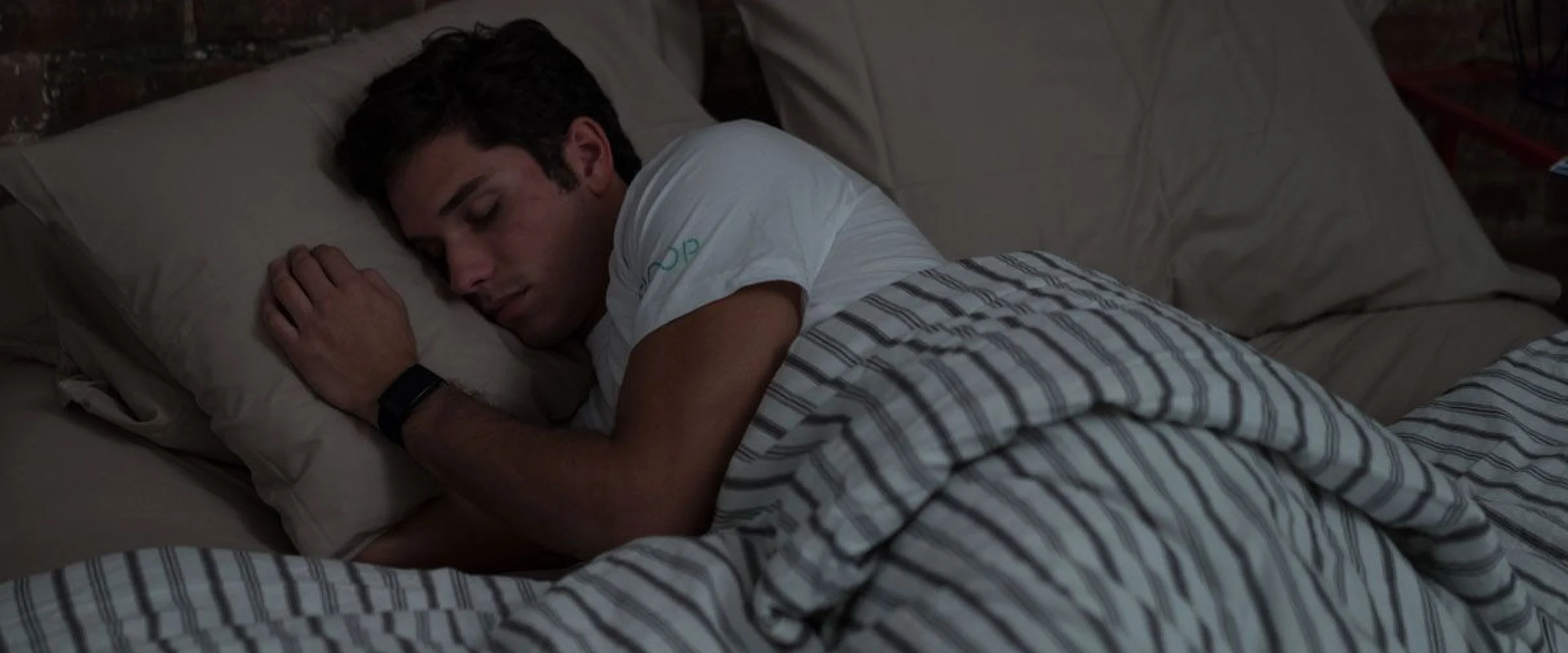Topics
- Article
The WHOOP Technology and Approach to Measuring Sleep

The Technology
WHOOP measures blood flow using a technology called Photoplethysmography (PPG). There are LEDs (light-emitting diodes) on the bottom of the strap that shine light into your skin, which is full of tiny capillaries. Blood in the capillaries absorbs more of the light than the tissue surrounding it. Specifically, the hemoglobins in blood absorb a particular wavelength of light. The light that isn’t absorbed is reflected back and received by a sensor called a photodiode, which is located between the LEDs. By observing the differences in light, WHOOP is able to track the changes in blood flow caused by each pulse, and in turn calculate your heart rate and heart rate variability. The WHOOP Strap also contains a three-axis accelerometer that measures motion. The PPG and accelerometer data are plugged into an advanced algorithm that determines your sleep stages (for a deeper dive into the stages of sleep, take a look at the White Paper: (The Importance of Sleep Stage Tracking for Athletic Performance and Recovery). Unfortunately the algorithm is a trade secret, so we can’t get into the specifics of how it works. However, we can tell you about the process that went into creating it.
Sleep Testing
About two years ago, WHOOP began running sleep tests on a wide variety of subjects. Among the early participants were company employees, college athletes, a Boston running club and other local volunteers. Each subject visited a certified sleep lab and underwent an overnight sleep test known as a polysomnogram (PSG). Participants were instructed to do everything as they normally would leading up to the study. At the lab, they were each given a room to sleep for the night that resembled a boring hotel room. The rooms were dark, comfortable and optimized for ideal sleep temperature. Many subjects brought work, while others read books and watched movies before falling asleep. The participants were outfitted with WHOOP Straps and numerous electrodes from the neck up to collect data for the PSG (pictured below via infrared video). They were then monitored by certified sleep technicians in an adjacent room for the entire night.

WHOOP data scientists trained our sleep staging algorithm by lining up the results of the PSGs with the data from the WHOOP Straps. We’ve followed this format ever since, refining and improving the algorithm as more and more athletes have gone through our sleep study protocol. Each time the Strap’s hardware or signal processing technology has been updated, more testing has been done to ensure the continued accuracy of the algorithm’s sleep detection.
WHOOP and You
No two human bodies are alike. From the minute you put on a WHOOP Strap, it begins to learn specifically about you, collecting data around the clock. After examining your first night’s Sleep wearing the Strap, WHOOP analyzes the data and uses it to better understand your body going forward.